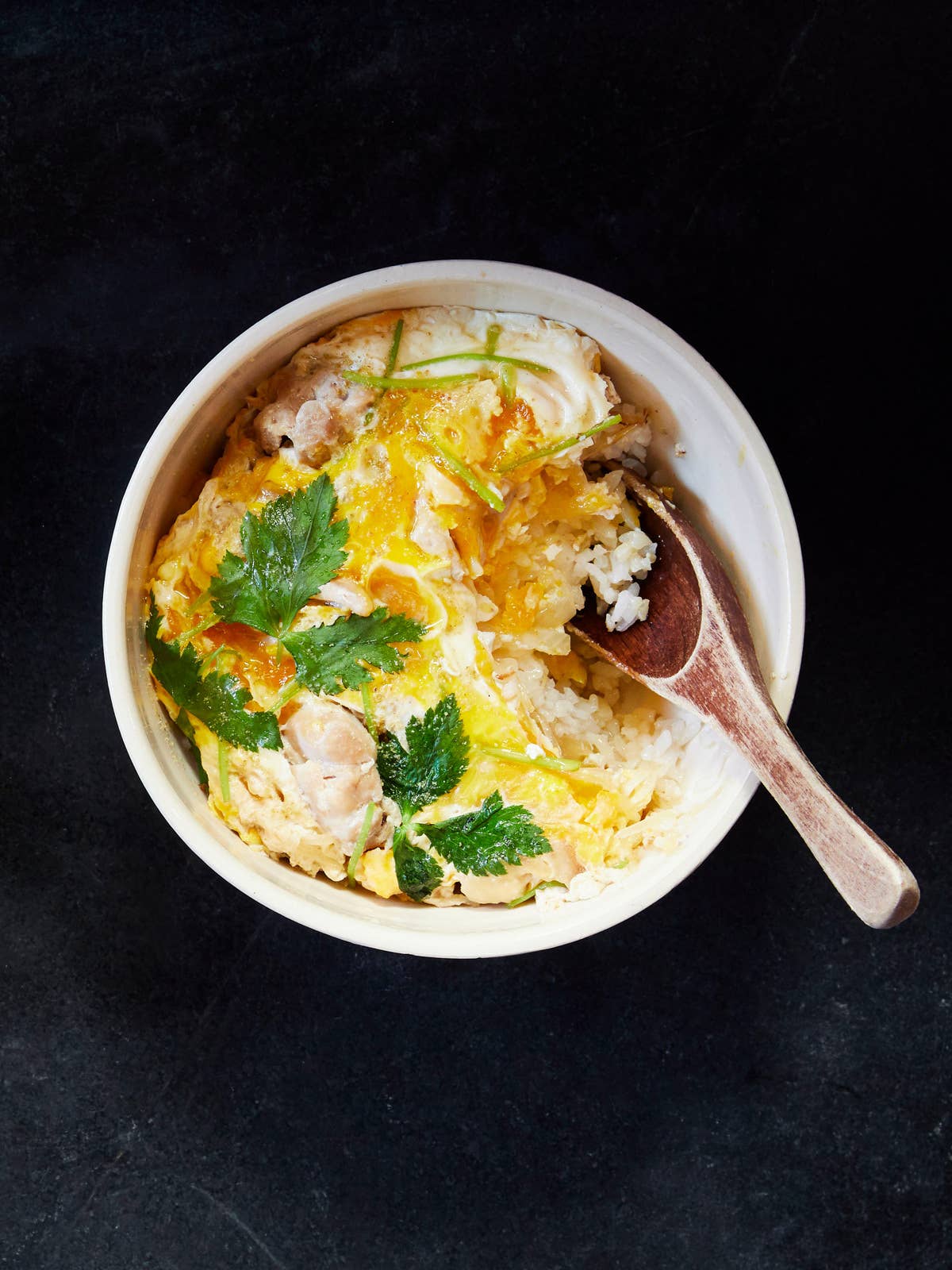Oyakodon (Chicken and Egg Rice Bowl)
This comforting dish of tender chicken and soft-cooked eggs over rice is a staple of Japanese home cooking and the izakaya tradition.
- Serves
4
- Cook
1 hour 10 minutes

This recipe is brought to you by the SAVEUR Cookbook Club, our passionate community of food-loving readers from around the globe celebrating our favorite authors and recipes. Join us as we cook through a new book every month, and share your food pics and vids on social media with the hashtags #SAVEURCookbookClub and #EatTheWorld.
The Japanese “don” family of dishes demonstrates the warming power of a good bowl of rice, and this recipe for oyakodon is no exception. Rice is also an essential final dish, or “shime,” at Rintaro, the San Francisco izakaya run by chef Sylvan Mishima Brackett. Though oyakodon may seem simple compared to some of the restaurant’s more elegant dishes, Brackett takes particular pride in making each rice dish its own work of art.
This recipe gets its rich flavor from homemade tsuyu, a sauce built on a base of katsuobushi niban dashi. Niban dashi, or “second steep” dashi, is a delicate stock made from the katsuobushi (bonito flakes) and konbu (kelp) that were previously used to prepare an ichiban (“first steep”) dashi. The hidden bonus of this dish is that it leaves you with a quart of homemade ichiban dashi to use in another recipe.
In Japan, the traditional way to prepare oyakodon is with a small saucer-shaped lidded pan with sloped edges that help slide the chicken and egg mixture out onto the rice for each serving. (To reproduce the izakaya experience at home, you can find a similar pan from the Japanese manufacturer Korin.)
If you can’t find mitsuba, a delicate herb that offers flavors of cedar and celery to the finished dish, substitute thinly sliced scallions. Usukuchi shoyu (soy sauce) and white shoyu are both lighter in color and taste than regular shoyu. They are not equivalent to American light soy sauce, which is lower in sodium.
Adapted with permission from Rintaro: Japanese Food from an Izakaya in California by Sylvan Mishima Brackett with Jessica Battilana. Published by Hardie Grant Publishing, October 2023.
Featured in “This Cookbook Will Help You Create Your Own Japanese Izakaya Experience” by Jessica Carbone.
Ingredients
For the niban dashi:
- One 2-in. square konbu
- 4 tightly packed cups (40 g) katsuobushi
For the sauce:
- ¼ cup mirin
- ¼ cup usukuchi or white shoyu (see headnote)
- 1 Tbsp. sugar
- 2 tightly packed cups (20 g) katsuobushi
For the oyakodon:
- ¼ cup vegetable oil
- 1½ lb. boneless, skin-on chicken thighs, cut into bite-size pieces
- Fine salt
- 1 large yellow onion, thinly sliced
- 8 large eggs
- 20 mitsuba sprigs, leaves separated and stems cut into 1-in. pieces (see headnote)
- Cooked sushi rice and ground sansho powder, for serving
Instructions
Step 1
Step 2
Step 3
Step 4
Step 5
Step 6
Keep Reading
Continue to Next Story










